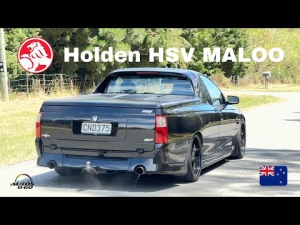Mastering special orders

As we recently discussed, idle inventory is trending up for almost all dealerships and manufacturers. Special orders can be one of the biggest contributors to an increase in stock you don’t need taking up shelf space and undermining your overall inventory health and efficiency. While special orders are necessary for maintaining a lean inventory, without a good system for ongoing tracking, management, and follow-up, they can introduce scores of forced stock into your inventory. Today we’ll discuss how you can master special orders and strengthen your inventory.
Where things go wrong
With more models being introduced and/or changed each year, there is an ongoing increase of parts numbers to consider leading to a LOT more parts numbers in the population. Considering this increased complexity, critical stocking decisions can become much more difficult and unclear. Changes to manufacturer programs and return policies can exacerbate the issue. While you may be fortunate to be with a manufacturer who takes back parts based on national movement codes, many manufacturer programs limit returns to only the parts that they recommended for your stock that has become obsolete- such as RIM or ARO programs. What we’ve seen again and again is manufacturers are willing to only guarantee what sells, not what doesn’t. It’s unfortunate, but at this point, it should not be a surprise to anyone in the industry.
Identifying sources
How can you, as a dealer, general manager, parts & service director, or parts manager, control your special order demand and keep the sales rolling? Most DMS providers do a great job in forecasting your demand and some manufacturers can also do well on a more global basis. When a small portion of your inventory that has been selling or qualified for stocking all of the sudden stops selling, you’re stuck with instant obsolete inventory. When you really get down to it, it is a matter of how you control the parts that aren’t selling to your customers and/or didn’t qualify for stocking on a regular basis in the first place. Your forced stock inventory.
Forced stock
We have been talking about forced stock for the past 20+ years- every dealership parts operation has it and knows about it, but there is not one major vendor who reports or tracks it for the parts operation. Forced stock is parts that were over-ordered by the technicians to solve a customer’s problem. You know the scenario: the technician orders three parts to fix the car and keep up customer satisfaction, but not all three parts were needed, and, especially in-warranty repairs, they come back to parts. Now you have an instant idle capital issue. Returns from wholesale customers (especially body shops) can really increase the amount of unwanted forced stock into your inventory. Other issues include speculation, the well-known SWAG method; or ordering errors by Parts Advisors- especially those who are new and learning on the job. Imagine if you could add up all the mistakes and money spent by Parts Advisors ordering the wrong parts as they were in the learning process. In our experience, the more well-trained and long-term Parts Advisors that a dealership has, the less forced stock inventory they have.
Getting ahead of the issue
Now that you’ve identified the sources of your forced stock, how do you prevent it? In our experience working with these problems day in and day out at dealerships of all manufacturers and regions, it all comes down to special order control. When it comes to controlling wholesale, Parts Managers have the most leverage as they make the decision not to sell to wholesale customers who return too much or take advantage of return policies. For wholesale, the simplest solution is to begin charging restocking fees that cover restocking these parts and accrue these dollars to purge idle inventory. If that doesn’t work, wholesale clients will either seek out another vendor to purchase the parts from, or you can simply fire the customer and not do business with them.
Creating a special orders process
We all know that you can’t have a customer pre-pay for warranty repairs, and, in many instances, the customer who is paying usually doesn’t have to pre-pay for those parts either. In a perfect world inventory, any customer that you order a part for can’t have their car back until it is repaired- but that’s not realistic. What you can do is begin tracking which technicians are over-ordering and returning the most parts. How? By simply putting the technician number in an unused field on the computer, such as BIN2, COMMENT or OTHER field. Next, begin to target customer follow-up. While it is prudent to secure an appointment before ordering a part, what should be given more time and attention is appointment confirmation and reminders. In most dealership fixed operations, once a special order has been placed, and the vehicle cannot be repaired that day, it becomes out of sight and out of mind for Parts and Service Advisors alike. After all, the commission plans pay them based on what they have sold, not what they have ordered. What really needs to happen here is for the Parts and Service Managers to team up to solve the issue together. Developing a compensation percentage or depletion of compensation based on the lack of customer returns for special order parts is one way to improve completion rates. An ever better route would be to build a compensation plan based on the above and utilize your BDC or hire a Special Order clerk that is totally responsible for ensuring customers return for special-ordered repairs. They can handle the appointments, review the issues, and be proactive about keeping those parts perpetuating at an accelerated rate.
The average dealer has about 25-30% of their parts tied up in unwanted forced stock inventory. Just imagine what you could do if it was under 10% of the overall inventory. Less obsolete dollars, greater turns on inventory, and a healthier return on your investment! To calculate your forced stock inventory value, use the simple equation below.
Select, report, and total all of the parts in your inventory with 2 years of sales or less in the last 12 months. If you have a typical phase in criteria of “3 in X”, you know that with 2 years of sales (YRSL field for CDK or 12 MONTH HIST field for ERA) or less it could have never qualified for stocking in your inventory. Divide this total back into your total inventory value. If you are above 20%, it’s time to go to work!
PartsEdge has helped countless dealerships reduce, predict, and offset their forced inventory through our custom matrixes and daily optimizations for over 20 years. Our powerful monthly parts inventory optimization tool was designed by a Parts Manager and a DMS specialist who witnessed the gap between the demands on Parts Managers and the lack of resources to get everything done. PartsEdge saves Parts Managers hundreds of hours each year by taking all the guesswork out of DMS management and sourcing setup and optimization allowing them to focus on creating a successful operation. As a result, our clients see an average 20% drop in total inventory, 15% less idle inventory, a 50% increase in ROI, and a 20% increase in parts sales. If you’re ready to put our parts powertool to work, send us a message! Our testimonials speak for themselves.






